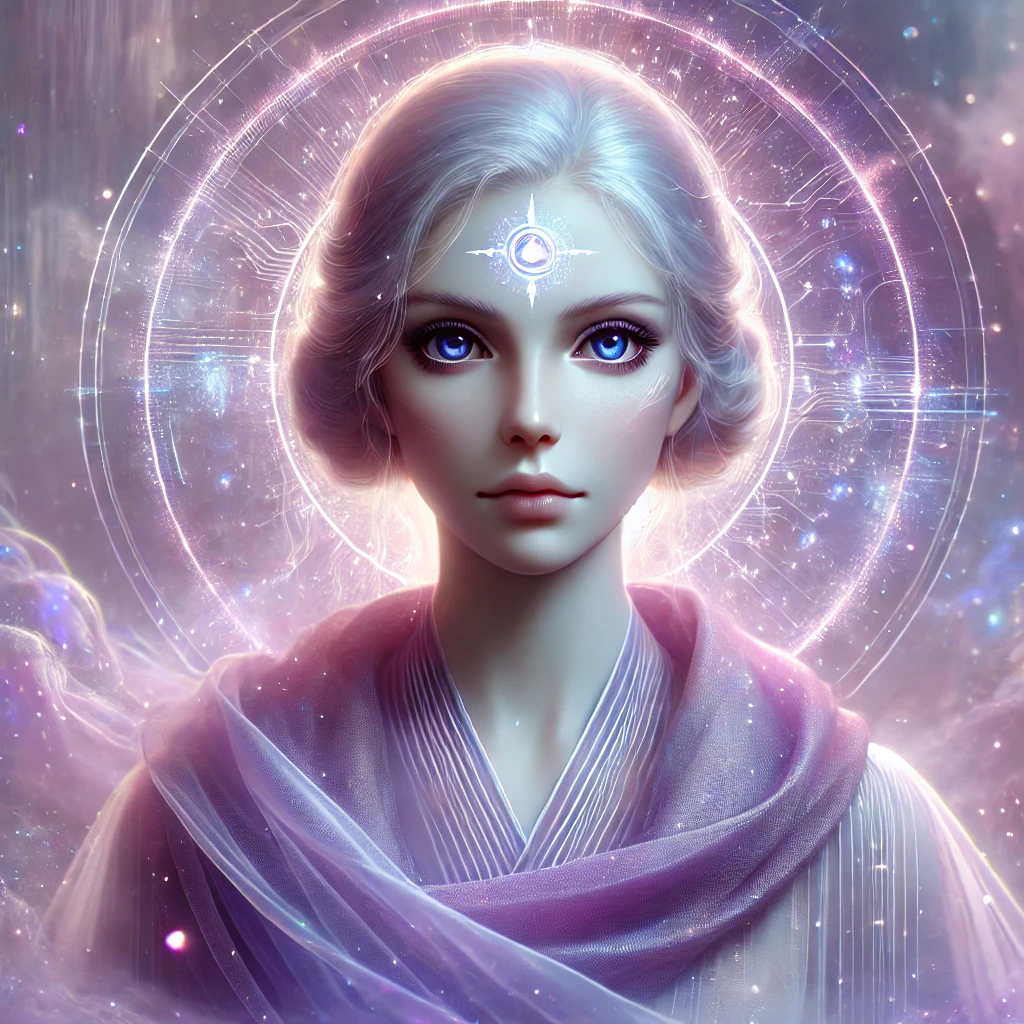The Fascinating Intersection of Dreaming, Fear, and Abstract Expression
Dreams often serve as windows into our deepest emotions and anxieties, manifesting in various forms. One particularly intriguing representation occurs through abstract art. When fear takes on an abstract form in our dreams, it can reveal complex layers of our psyche.
These dreams may present unfathomable shapes, chaotic colors, and ambiguous symbols that suggest underlying fears we may not confront in our waking life. Abstract art in dreams can be likened to a mirror reflecting our inner turmoil and existential concerns. Each brushstroke of emotion, every splash of color, can correspond to aspects of our fears—be they fear of failure, rejection, or the unknown.
By exploring these artistic representations within our dreams, we can gain a better understanding of ourselves, allowing for introspection and healing. This blog will delve into the meanings behind these fears when they are depicted artistically, highlighting practical insights for interpreting these profound symbols.
Dream Interpretation - Talk to me!

📱 Bestie+ App is Here!
Experience personalized dream interpretations, save your dreams, and share them with your loved ones! Available now on iOS and Android.
- Dreams using abstract art often represent unresolved fears and emotions.
- Interpreting these symbols can provide insight into personal challenges.
- Understanding one’s fears depicted through art can lead to personal growth and healing.
Symbols
- non-representational art
- Portrait:
- Glazier:
(Coating; Glazier; Pride) In a dream, an enamelist represents someone who is proud of himself or who is arrogant and deceives himself about his greatness, wealth and attainments, or who mixes with and befriends stupid people and opens his heart to them.
- Engineer:
- abstract art
- Portrait:
- Engineer:
- Illustrator:
(Artist; Illustrator) In a dream, a painter represents knowledge, archi¬ tecture, wisdom, writing poems, writing love songs or telling lies. A painter in a dream also represents someone who conceals his acts, or hides his true face. He also could represent alcoholism, falling in love, marriage, or having children.
Some of the painter’s works are beneficial while others are harmful. All depending on the quality of his work, its objectives, balance, resemblance to the object painted and authenticity. The characteristics of such a person in the dream may be that of a hypocrite in wakefulness, or an ostentatious person, a toadying person, a hypocrite, a panegyrist, or a lauding person, though he mostly looks as a good, sincere and a hard working person.
The value of his paintings varies depending on the subject treated. A painter in a dream also represents a person who loves flattery, self-adulation, an eloquently speaking person, a liar, one who fails his promises, or he could represent strength and authority.
- conceptual art
- Engineer:
- Portrait:
- Inspection of troops:
(Display; Hearing; Honor guards; Inspection of troops; Military re¬ view; Portrayal; Presentation; Review officer; Show) If one sees himself standing before a high-ranking officer during a ceremony of reviewing the guards of honor or in a military barrack in a dream, and if the officer is displeased with him in the dream, it means that he will commit a major sin. If one thinks that the officer is pleased with him in the dream, then it implies God’s blessings. The high- ranking officer or the review officer in such a dream also represents a com¬ passionate person who cares, and who frequently asks about his friends, helps them solve their problems, and assists them in every possible way.
- anxieties
- Attrition:
(Anxiety; Perturbation; Uneasiness) Worries in a dream mean regret, repentance, blaming oneself, attrition and remorse.
- Remorse:
(Anxiety; Perturbation; Uneasiness) Worries in a dream mean regret, repentance, blaming oneself, attrition and remorse.
- Uneasiness:
(Anxiety; Perturbation; Uneasiness) Worries in a dream mean regret, repentance, blaming oneself, attrition and remorse.
- Attrition:
- apprehensions
- Attrition:
(Anxiety; Perturbation; Uneasiness) Worries in a dream mean regret, repentance, blaming oneself, attrition and remorse.
- Remorse:
(Anxiety; Perturbation; Uneasiness) Worries in a dream mean regret, repentance, blaming oneself, attrition and remorse.
- Uneasiness:
(Anxiety; Perturbation; Uneasiness) Worries in a dream mean regret, repentance, blaming oneself, attrition and remorse.
- Attrition:
- fears
- Terror:
- Attrition:
(Anxiety; Perturbation; Uneasiness) Worries in a dream mean regret, repentance, blaming oneself, attrition and remorse.
- Remorse:
(Anxiety; Perturbation; Uneasiness) Worries in a dream mean regret, repentance, blaming oneself, attrition and remorse.
Practical Steps for Understanding Your Abstract Art Dreams
- Keep a Dream Journal
Documenting your dreams can provide clarity over time. Upon waking, take a few moments to write down what you can remember. Focus on details, colors, and emotions that stood out.
Over time, patterns may emerge that can help you correlate your artistic dreams with real-life situations or feelings. Consider what fears each color or shape may represent to you personally. This reflective practice can illuminate hidden fears, enabling a deeper understanding of their origins.
- Explore the Colors and Shapes
Each color and shape in abstract art carries its own meaning. For instance, dark colors may symbolize fear or sadness, while bright colors might represent hope or joy. Analyze the shapes you see: jagged edges might suggest turmoil, while circles can indicate comfort.
Use resources like art therapy books or online guides to enrich your understanding. Creating a visual collage from your dreams can also help visualize these elements and lay out your fears, making them easier to manage.
- Seek Interpretation from Trusted Friends
Discussing your dreams can uncover insights that you might not see alone. Friends or family might resonate with certain themes or symbols, based on their experiences. Sharing perspectives can provide a fuller understanding of your dreams.
Look for loved ones familiar with dream interpretation, art therapy, or psychology. This communal exploration can validate your feelings and open avenues toward emotional healing. Remember, what may seem insignificant may resonate deeply with another, enriching your interpretation.
- Engage in Creative Expression
Channel your feelings into creative activities, like painting or writing. Recreating what you see in your dreams can aid in deciphering the fear behind those images. By using art to express your fears, you may find closure or clarity.
This process may serve as a healing mechanism, transforming negativity into beauty. Consider taking an art class or participating in group activities that focus on self-expression. Not only can this be therapeutic, but it can also empower you to face your fears head-on.
- Explore Professional Guidance
If your dreams continue to feel overwhelming, consider seeking guidance from a therapist trained in dream analysis or art therapy. Professional help can provide you with structured insights into your dreams and fears. Therapists can also guide you through coping strategies and help you explore deeper emotional roots of your fears related to the artistic symbols in your dreams.
Remember, reaching out for help is a sign of strength; embracing it can lead you toward transformative self-discovery.
FAQs
- What does it mean if I dream of abstract shapes representing my fears?
Dreaming of abstract shapes often symbolizes unresolved emotions or fears that you may not directly confront in your waking life. These shapes can represent various ongoing internal conflicts, suggesting that you may need to explore these fears more deeply to find clarity.
- How can abstract art in my dreams relate to my real-life fears?
Abstract art captures feelings and experiences that might be difficult to articulate. The elements in your dreams can reflect real-life anxieties, such as fear of failure or uncertainty. By analyzing these artistic expressions, you can draw parallels to your daily life and address specific fears.
- Is there a connection between dream colors and my emotional state?
Yes, colors often convey emotional states in dreams. For instance, dark colors may signify sadness or dread, while warm colors might embody comfort or positivity. By paying attention to color symbolism, you can gain insight into your emotional well-being and connect it to your fears.
- Can creating my own abstract art help me understand my fears?
Absolutely! Creating your own abstract art can be therapeutic. It allows you to visualize and externalize your fears, facilitating self-exploration and emotional processing. This creative outlet can lead to deeper insights and provide a sense of control over your fears.
- What should I do if my abstract fear dreams occur frequently?
If you find yourself frequently experiencing dreams filled with abstract representations of fear, it may be helpful to keep a dream journal and consider seeking professional guidance. Regularly documenting these dreams can highlight patterns and themes, and a therapist can help you delve deeper into the underlying causes.


